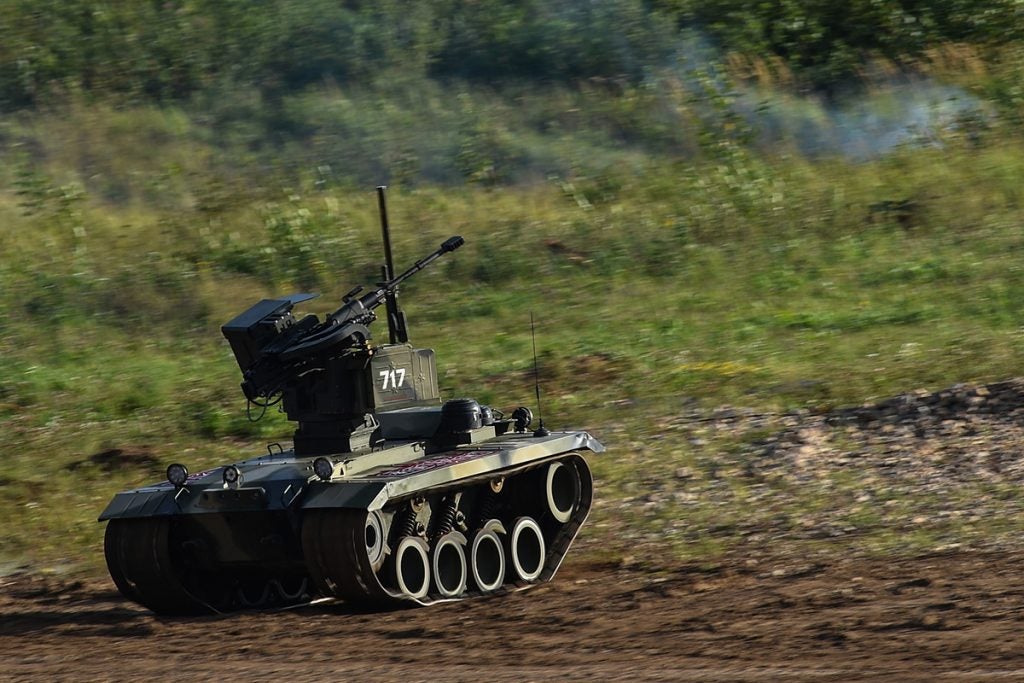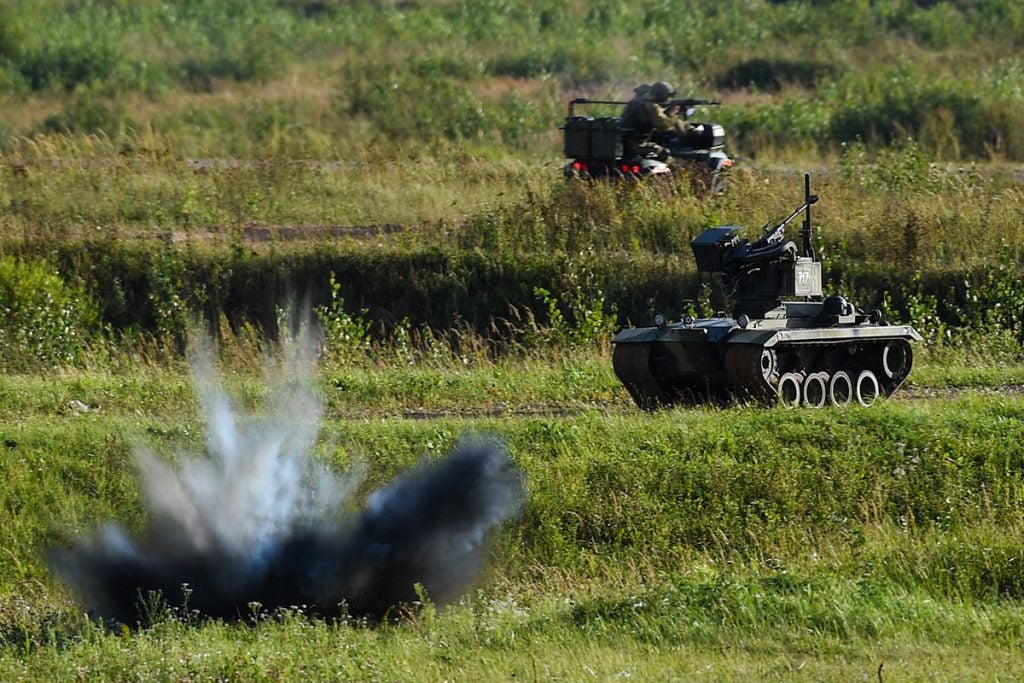Russia Testing Kungas UGV Family
The Russian Defence Ministry displayed a number of Kungas family unmanned ground vehicles (UGVs) last month during blast testing at the 12th Central Research Institute. Russia is aiming to field autonomous armed UGV teams, perhaps paired with drone swarms, for testing by 2025 with resupply also conducted by unmanned platforms.
The Kungas line of UGVs includes five distinct variants; a small wheeled man-portable model weighing some 12 kilograms, a light 200 kg wheeled model that can be employed as an engineer or armed platform, an tracked air-transportable fire support model weighing 2000 kilograms, the tracked Nerekhta combat model weighing 2500 kilograms and an unmanned variant of the BTR-MDM armoured personnel carrier (APC). All of the variants can be commanded by a single human controller.
The man-portable variant is equipped with a manipulator arm and appears to be aimed at explosive ordnance disposal (EOD) or combat engineering. The modular six wheeled light variant can be equipped with a range of weapons systems including the AG-30M automatic grenade launcher, an RPO thermobaric launcher, a PKTM medium machine gun or a ‘four-pack’ of Kornet anti-tank guided missiles. Another module converts the UGV for engineering or EOD tasks with a manipulator arm.

The tracked fire support model is also modular however the base version appears to mount both an AG-30M and a Kord heavy machine gun. The Nerekhta can also carry both an AG-30M and a Kord or PKTM along with up to 500 kilograms of stores. Another modular design, the Nerekhta can be configured for electronic warfare, medical evacuation, or ISR (intelligence, surveillance and reconnaissance).
The BTR-MDM ‘Rakushka’ or ‘Shell’, is an unmanned armoured personnel carrier and can be equipped with a similar range of armament or configured in medical or transport modes. Similar experiments with unmanned APCs and infantry fighting vehicles (IFVs) are being conducted in the West with the aim being delivery of an infantry squad into the direct fire zone. The unmanned platform would then provide intimate fire support for its assigned squad without risking the crew of a traditionally manned platform.

